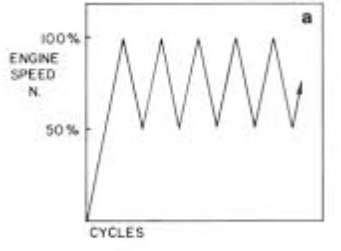"N1" is the low pressure shaft speed, and "N2" is the high pressure shaft speed. N1 and N2 throttle cycles are when the throttle is moved up-down-up (or vice-a-verse), which causes the N1 and N2 speeds to go up-down-up, and hence "around" like a "cycle".
However, you will not find an "exact" definition, because it varies from engine to engine, even for the same manufacturer. In addition, the exact numbers that define the rpm changes required are usually not publicly available, as they are probably commercially sensitive.
But you can find a general description of "throttle cycles". Low cycle fatigue (LCF), is monitored by counting stress cycles. LCF is what causes a wire to break by bending it back and forth, which is a much easier way to break it, than by pulling each end. Cycling the stress back and forth (up and down) fatigues the wire and it breaks. The same thing happens in gas turbine rotating parts. As they speed up and down (in RPM) the centrifugal stresses increase and decrease. This can cause the rotating parts to fail. So they all have a "hard life", which when reached, the part is thrown away, regardless of condition.
In old engines, that don't have a monitoring system, they don't actually count each time the speed goes up and down. Instead, the engine manufacturer analyses the typical flight, and works out how many cycles occur per hour, on average. This gives an exchange ratio between hours and throttle cycles. See page4.
In modern engines, they actually count the cycles that occur. This means, if they fly the plane slightly differently than intended, the life being consumed is correctly recorded, whereas the exchange ratio would be wrong. (Though the life limit still needs to be verified as correct for the different mission profile).
Typically, 1 cycle is from idle to max speed, and back to idle. 60% to max and back to 60% may be 0.5 cycles, and 75% to max and back to 75% 0.25 cycles, as an example. So, if you take-off, from idle, do a climb at max RPM, throttle back in cruise to 60%, return to max before landing, and then shutdown the engine, you have accumulated 1+0.5+0.25=1.75 cycles in the flight. (Recognising that when you go from 60 to max back to 60, you have meet the criteria for both the 0.5 and 0.25 cycles.)
e.g. Another example of throttle cycles:

